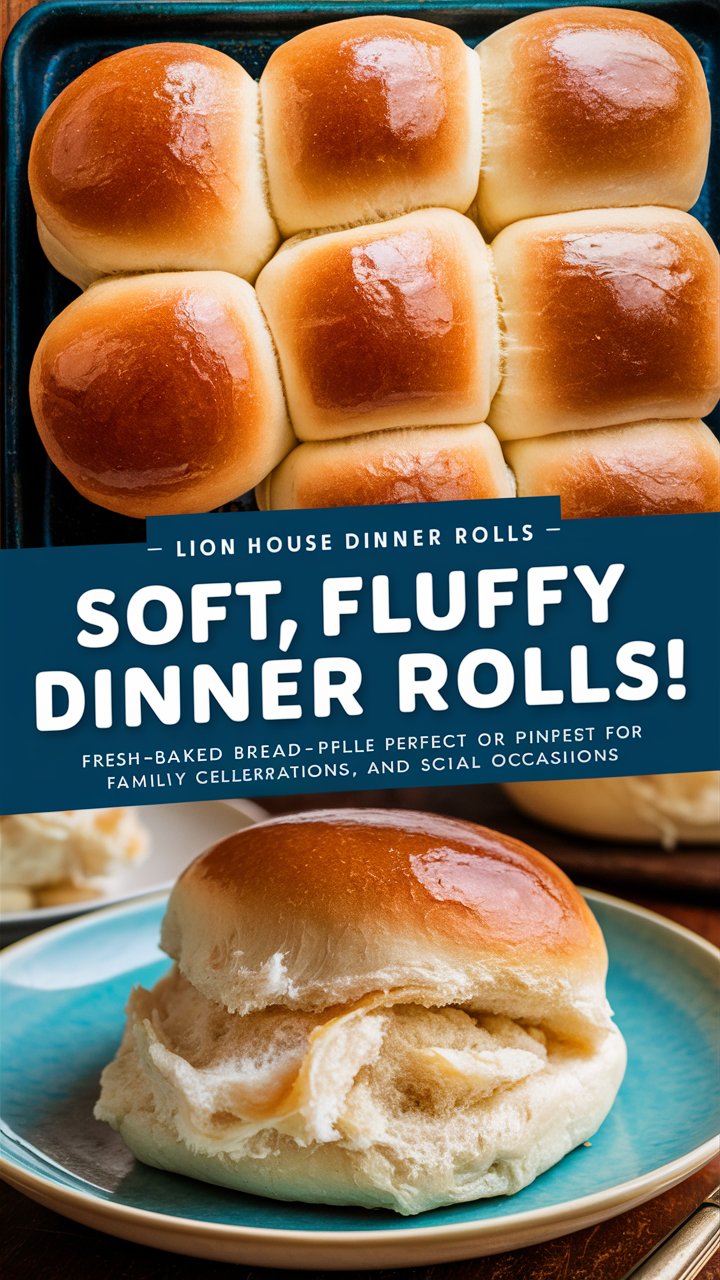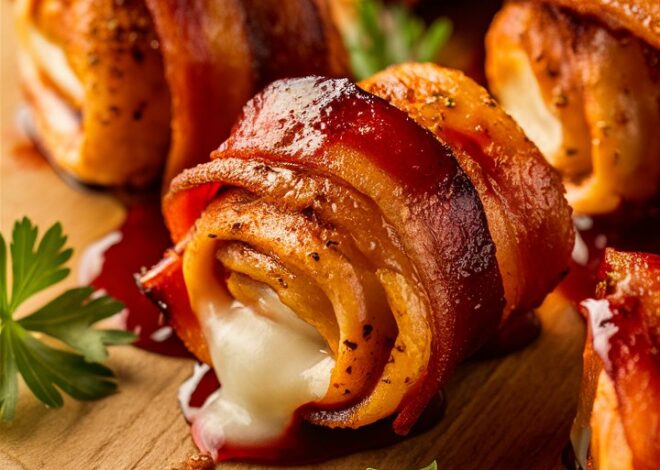
Authentic Lion House Dinner Rolls Recipe You’ll Love 2025
There’s something magical about freshly baked dinner rolls. The way the aroma fills your kitchen, the soft, pillowy texture, and the buttery taste make them the perfect companion for any meal. Among the many varieties, Lion House Dinner Rolls stand out as an iconic recipe cherished by families for generations. Originating from the famous Lion House in Salt Lake City, Utah, these rolls have become synonymous with comfort, warmth, and celebration.
In this ultimate guide, you’ll learn everything you need to know to master the Lion House Dinner Rolls recipe—from selecting the right ingredients and mastering the dough to baking golden, fluffy rolls that pull apart effortlessly. Whether you’re a beginner or a seasoned baker, this comprehensive article will provide you with expert tips, step-by-step instructions, storage advice, troubleshooting help, and even variations to customize your rolls.
Why Lion House Dinner Rolls Are So Special
Lion House Dinner Rolls are beloved for several reasons:
- Soft and Fluffy Texture: The rolls have an airy, tender crumb that melts in your mouth.
- Buttery Flavor: A generous amount of butter in the dough and on top after baking adds richness.
- Golden Crust: A perfectly browned exterior offers subtle contrast without being too hard.
- Versatility: They pair beautifully with soups, stews, roasts, or simply with jam.
- Simple Ingredients: Made from pantry staples with no complicated steps.
- Tradition and Nostalgia: Many associate them with family gatherings and holidays.
Essential Ingredients for Perfect Lion House Dinner Rolls
Before starting, gather the following high-quality ingredients:
| Ingredient | Purpose | Notes |
|---|---|---|
| Warm Water (110°F) | Activates yeast | Use a thermometer for accuracy |
| Nonfat Dry Milk Powder | Adds richness and tenderness | Substitute with warm milk if needed |
| Active Dry or Instant Yeast | Leavens dough | Check expiration date |
| Granulated Sugar | Feeds yeast, adds slight sweetness | Balances flavor |
| Salt | Enhances flavor | Don’t skip |
| Unsalted Butter (softened) | Adds moisture, flavor, richness | Room temp for easy mixing |
| Large Egg | Adds structure and color | Optional but recommended |
| All-Purpose Flour | Provides gluten for structure | Start with 5 cups, add more as needed |
| Melted Butter (for brushing) | Finishes rolls | Adds shine and buttery flavor |
Step-by-Step Instructions: How to Make Lion House Dinner Rolls
Step 1: Activate the Yeast
Start by warming your water to approximately 110°F (warm to the touch but not hot). In a large mixing bowl, dissolve the nonfat dry milk powder into the warm water. Sprinkle the yeast on top and stir gently. Let it sit for 5–10 minutes until it becomes bubbly and foamy — this indicates the yeast is alive and active.
Pro tip: If the yeast doesn’t foam, it might be expired or the water temperature was off. It’s best to start over for successful rising.
Step 2: Combine Wet Ingredients
Once the yeast is activated, add the sugar, salt, softened butter, and egg to the bowl. Mix thoroughly to combine the ingredients. The sugar will help feed the yeast further during the rising process.
Step 3: Add Flour and Form Dough
Begin by stirring in about 2 cups of all-purpose flour gradually. Once incorporated, start adding more flour in ½-cup increments. The goal is to form a soft dough that is slightly sticky but pulls away from the sides of the bowl.
Step 4: Knead the Dough
Transfer the dough to a floured surface or keep it in your mixer if you have a dough hook attachment. Knead for 5–7 minutes until the dough becomes smooth, elastic, and slightly tacky but no longer sticky.
Kneading Tip: Proper gluten development is key to fluffy rolls. Under-kneaded dough leads to dense rolls; over-kneading can make the dough tough.
Step 5: First Rise
Place the dough in a lightly greased bowl. Cover it tightly with plastic wrap or a clean kitchen towel. Let it rise in a warm, draft-free environment for about 1 hour or until it doubles in size.
If your kitchen is cold, place the bowl in a turned-off oven with the light on or near a warm spot.
Step 6: Shape the Rolls
Once risen, punch down the dough gently to release air. Roll it out on a floured surface into a large rectangle about ¼ inch thick. Cut the dough into strips approximately 2 by 4 inches.
Roll each strip into a cylinder and place seam side down on a greased baking sheet or pan, leaving a little space between each roll.
Shape Variations: Feel free to make round balls or knots for variety.
Step 7: Second Rise
Cover the shaped rolls loosely with a kitchen towel or plastic wrap. Let them rise again for 30–45 minutes or until they become puffy and nearly double in size.
Step 8: Bake to Golden Perfection
Preheat your oven to 375°F (190°C). Bake the rolls on the middle rack for 15–18 minutes or until the tops turn a warm golden brown.
Step 9: Butter Them While Warm
Remove the rolls from the oven and immediately brush the tops generously with melted butter. This step adds shine and deepens flavor.
Tips for Baking Success
- Use fresh yeast: Expired yeast won’t rise well.
- Measure flour correctly: Too much flour makes tough rolls; too little causes sticky dough.
- Don’t rush the rises: Patience yields airy rolls.
- Check oven temperature: Use an oven thermometer for accuracy.
- Brush with butter immediately: To lock in softness and moisture.
Storing and Reheating Lion House Dinner Rolls
Storing Rolls
- Room temperature: Store cooled rolls in an airtight container or resealable bag for up to 3 days.
- Freezing: Wrap rolls individually in plastic wrap and freeze in a sealed bag for up to 3 months.
- Make-ahead dough: Refrigerate shaped rolls after second rise overnight. Bake fresh the next day.
Reheating Tips
- Wrap rolls in foil and warm at 300°F for 10 minutes.
- For microwaving, wrap in a damp paper towel and heat for 15-20 seconds to restore softness.
Nutrition Information (per roll)
- Calories: 160
- Carbohydrates: 25g
- Protein: 4g
- Fat: 4.5g
- Saturated Fat: 2.5g
- Cholesterol: 20mg
- Sodium: 180mg
- Fiber: 1g
- Sugar: 4g
Frequently Asked Questions (FAQ)
Q1: Can I substitute nonfat dry milk with regular milk?
A: Yes! Use 1 cup warm milk and reduce water accordingly. It will slightly change texture but remain delicious.
Q2: Can I make these rolls vegan?
A: Substitute butter with vegan margarine and use a flax egg (1 tbsp ground flaxseed + 3 tbsp water) instead of a chicken egg.
Q3: How do I store leftover rolls to keep them soft?
A: Avoid refrigeration as it dries bread. Instead, keep in airtight containers at room temperature or freeze for longer storage.
Q4: What if my dough doesn’t rise?
A: Check yeast freshness, water temperature, and that the dough is covered in a warm place.
Q5: Can I add herbs or cheese?
A: Absolutely! Add minced garlic, rosemary, or shredded cheese to the dough for flavored variations.
Delicious Variations to Try
- Garlic Parmesan Rolls: Add minced garlic and parmesan cheese to dough or brush with garlic butter after baking.
- Herb-Infused Rolls: Mix fresh or dried herbs like rosemary, thyme, or basil into the dough.
- Sweet Rolls: Add a tablespoon of honey to the dough and brush with cinnamon butter after baking.
- Whole Wheat Mix: Substitute up to half the flour with whole wheat for a nuttier, heartier texture.
Troubleshooting Common Issues
| Problem | Cause | Solution |
|---|---|---|
| Rolls are dense | Under-kneaded dough or insufficient rising | Knead dough longer, ensure proper rising |
| Rolls don’t brown | Oven temperature too low or baking time too short | Check oven temp, bake longer |
| Rolls are dry | Overbaking or refrigeration | Reduce bake time, avoid fridge storage |
| Dough is sticky | Too little flour added | Add flour gradually until dough is tacky but not sticky |
| Yeast not activating | Water too hot/cold or expired yeast | Use correct water temp and fresh yeast |
Why Make Lion House Dinner Rolls at Home?
Baking your own Lion House Dinner Rolls means you control the ingredients, avoid preservatives, and enjoy the unmatched aroma and warmth of fresh bread. Plus, the satisfaction of serving homemade rolls can’t be beat.
They are perfect for holidays like Thanksgiving and Christmas, family dinners, or just to elevate your weeknight meals.
Conclusion
The Lion House Dinner Rolls recipe is a timeless classic that combines simplicity with delicious results. With this detailed guide, you have all the tools you need to bake the perfect batch of soft, fluffy, buttery rolls. By following the step-by-step instructions, tips, and variations, you’ll impress your family and guests every time.
Get ready to fill your kitchen with warmth and your table with golden rolls that bring smiles and comfort in every bite!


